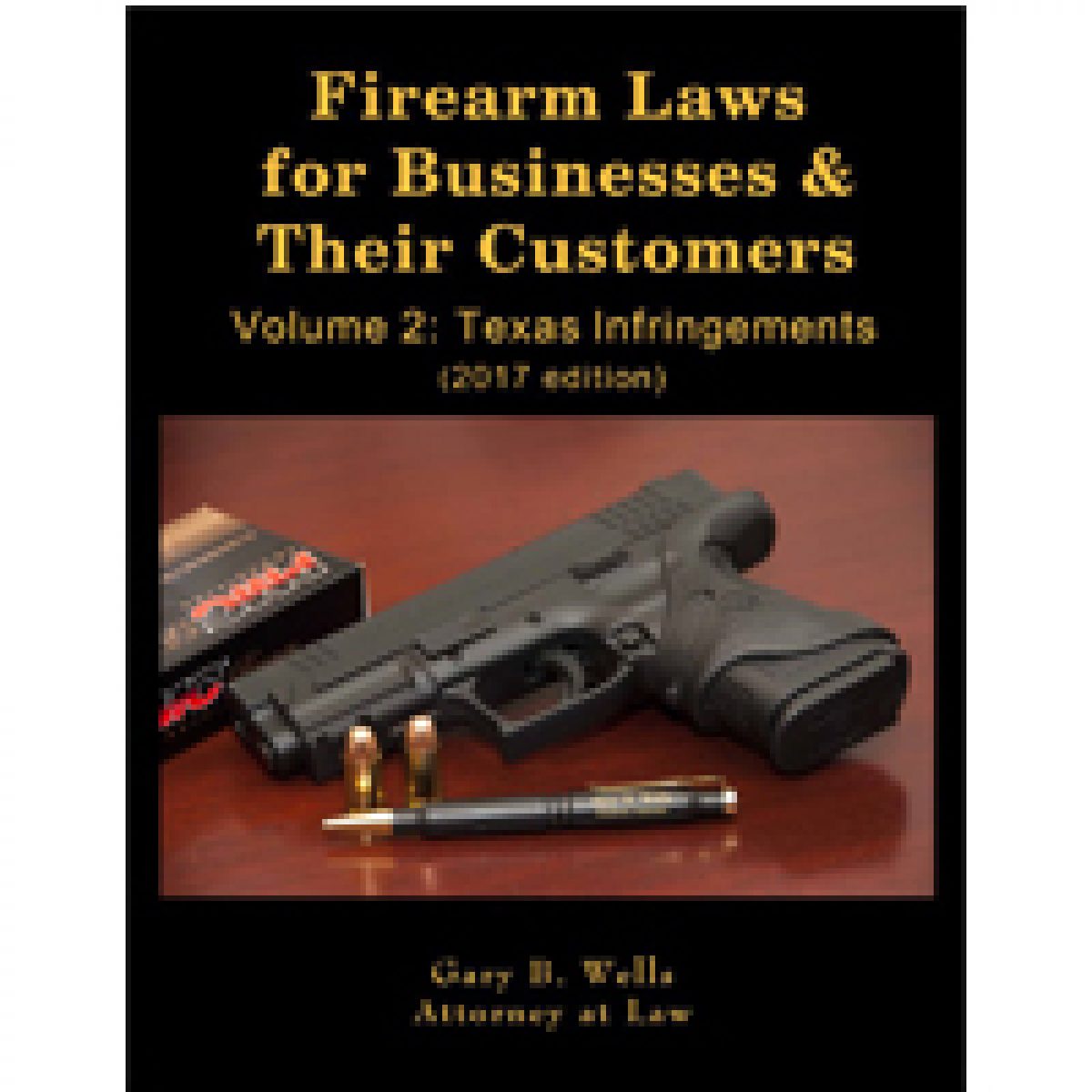ATF Forces Definitions to Regulate Bump-Fire Stocks Despite the Facts
Obama is likely smiling. All we needed to get more gun control was to elect more Republicans. Without the promised concealed carry reciprocity, we now have the Fix NICS (National Instant Criminal Background Check System) law that accomplishes little more than aggravating the problems already part of the NICS and at a significant expense. (Paying people to add rocks to a cart with a broken axle doesn’t fix anything.)
The Standard for Infringement is Not Automatic Fire
Now Republicans reaffirm that the Second Amendment can be infringed upon whenever the weapon approximates automatic fire. Anyone understanding and intending to uphold the purpose of the Second Amendment’s protection against a tyrannical government would also understand that the rifles used by the government’s military for more than fifty years must not be prohibited from the people. Either there is no longer any such understanding, or the politicians do understand, but fear this purpose and want to neuter it.
Progressive Legislation from the Executive Branch Continues
Regardless of the Constitutional infringement, the ATF’s notice of proposed rulemaking to classify bump-fire stocks as machineguns is outside the clear provisions of statutory law and involve forcing a square peg in a round hole. These efforts require the ATF to bypass legislation, re-write history, re-define terms beyond any reasonable definition, endlessly repeat false statements, make inconsistent arguments, and then illogically jump from the new erroneous definitions to derive the desired and forgone conclusion they were directed to reach.
If You Can’t Win the Argument, Change the Terms
Statutes specifically define a “machine gun” as a weapon which shoots, is designed to shoot, or can be readily restored to shoot, automatically more than one shot, without manual reloading, by a single function of the trigger. Importantly, the definition is solely focused on the function of the trigger.
Rather than relying on Congress to change what is regulated, the ATF has taken upon itself “to reconsider and change” its interpretation of “automatic” and “machinegun” to regulate something never intended to be regulated under the language of the statute. In other words, the ATF’s implies that the reason bump-fire stocks are not regulated as machineguns is not because Congress didn’t intend to regulate them as such, but because the ATF previously “classified” them incorrectly. It is now correcting this error.
The ATF argues that the reclassification is necessary because its previous decisions on the legality of bump-fire stocks “did not include extensive legal analysis relating to the definition of ‘machineguns.’” Rather than allowing the facts to support its conclusion, the ATF now makes ridiculous “legal arguments” to support its forgone conclusion that bump-fire stocks are machineguns. (After all, gun control has never really been about the facts.) To justify its new conclusion, the ATF is required to ignore its previous rulings that were based on a correct factual analysis and now create new legal definitions. These new definitions ignore reality and create self-firing firearms. (We know how guns have a will of their own.)
Get Around the Facts By Making It Sound Complicated
The ATF’s June 7, 2010, letter regarding the “bump-stock” correctly explained, “The stock has no automatically functioning mechanical parts or springs and performs no automatic mechanical function when installed. In order to use the installed device, the shooter must apply constant forward pressure with the non-shooting hand and constant rearward pressure with the shooting hand.” The ATF’s new arguments in support of their proposed rule changes briefly mention these physical requirements. However, the ATF now asserts that these bump-fire stocks “harness[] the energy from the firearm’s recoil” not only “through a mechanism like an internal spring” [which bump-fire stocks do not have], but also “in conjunction with the shooter’s maintenance of pressure (typically constant forward pressure with the nontrigger hand on the barrel-shroud or fore-grip of the rifle, and constant rearward pressure on the device’s extension ledge with the shooter’s trigger finger).” Once recognizing these inconvenient facts, the ATF quickly ignores them in re-defining the term “automatic.” Instead, the ATF removes any actions required by the shooter and asserts that these bump-fire stocks “harness the recoil energy of the firearm, providing the primary impetus for automatic fire.” Once the first shot is fired, it is apparent that these stocks “harness” this energy to fire the weapon all by themselves.
Of course, this conclusion is erroneous. When the firearm is fired, the recoil will cause the lower receiver to pull back into the sliding stock, releasing and resetting the trigger. The trigger is completely released and must be pulled back again to fire another shot. Thus, there is only a single “function” or “pull” of the trigger for each shot fired. If the shooter does not push the barrel forward, the firearm will not fire again. This contrasts sharply with real machineguns where the shooter pulls back the trigger one time and holds it back to obtain “automatic” fire.
Ignore the Contrary Facts to Obtain the Directed Conclusion
The ATF argues that bump-fire stocks “harnesses the recoil energy to slide the firearm back and forth so that the trigger automatically reengages by ‘bumping’ the shooter’s stationary trigger finger without additional physical manipulation of the trigger by the shooter. The bump-stock-type device functions as a self-acting and self-regulating force that channels the firearm’s recoil energy in a continuous back-and-forth cycle that allows the shooter to attain continuous firing after a single pull of the trigger so long as the trigger finger remains stationary on the device’s extension ledge (as designed).” This lengthy explanation using erroneous phrases such as “harnessed energy,” “recoil energy,” “self-acting and self regulating,” and “physical manipulation” is nonsense on several levels. It ignores the critical pushing of the barrel forward to actually fire the weapon. The fact that the shooter is required to push the barrel forward with one hand in order for the finger of the other hand to pull the trigger is a “physical manipulation” of the trigger based on specific actions taken by the shooter. The difference made by the bump stock is that the shooter is pulling the firearm into the trigger finger rather than the finger pulling back the trigger. Either way, there is only one shot fired for each pull of the trigger. The firearm is neither “self-acting” nor “self-regulating.”
Nor does this “harnessed energy” continually cycle the firearm forward and backwards. This “harnessed energy” is created as the gas from the exploding gunpowder is redirected from the barrel through the gas tube to force the bolt rearward, which also ejects the shell casing of the fired cartridge. This action only pushes the firearm backwards and releases the pressure on the trigger, causing it to reset. The buffer spring then forces the bolt to return to the forward position, locking the next cartridge into the chamber. The “harnessed energy” is then spent. Importantly, the forward movement of the bolt does not move the rifle forward or cause the trigger finger to pull the trigger back to fire that next cartridge. The trigger must still be pulled again to fire the weapon. That is only accomplished by the shooter pushing the barrel forward and is not done by any action of the firearm itself.
The ATF continues its previous “interpretation of the phrase ‘single function of the trigger’ to mean ‘single pull of the trigger’” as part of the definition of “automatic.” However, focusing on the trigger prevents the ATF from the conclusion it wants because, unlike a real automatic weapon, the trigger fires only once for each pull of the trigger. In response, the ATF expands the definition of automatic to include the pulling of the trigger “as the result of a self-acting or self-regulating mechanism that allows the firing of multiple rounds through a single pull of the trigger.” “Self” in “self-acting” and “self-regulating” refers to actions of the firearm independent of those of the shooter. The problem is that these “self-acting” or “self-regulating” mechanisms are not what causes the firearm to shoot. They only reset the trigger, requiring it to be pressed again to fire another shot. The ATF entirely ignores the push/pull actions required by the shooter. Again, the “harnessed energy” does not cause the trigger to be pulled and has nothing to do with the firing of the weapon. This is accomplished by the shooter pulling against that “harnessed energy.”
Accordingly, the ATF’s new definition of “automatic,” means that once the trigger is pulled on a weapon using a bump-fire stock, the firearm will continue to fire until the firearm malfunctions or the magazine is depleted. Nothing is required of the shooter and, impliedly, the firing will not stop until the firearm malfunctions or the magazine is depleted. After all, the trigger will continue to be pressed by this harnessed energy independent of any actions of the shooter. Of course, this is not reality. The shooter must maintain a finger over the trigger, apply forward pressure on the barrel, and apply rearward pressure against the shoulder in order to make the process work. There is no continuous back-and-forth cycling by this magical “harnessed energy,” only a backwards motion.
An important distinguishing feature from real automatic firearms is that those weapons can be fired with one hand. A bump stock cannot. Neither the initial firing of the trigger, nor any follow-up shots, can be made without that forward pressure on the barrel. If the bump-fire stocks caused the weapon to fire automatically without any further manipulation of the trigger, they would fire using only one hand. The ATF supports is “self-acting” definition by arguing that “the trigger finger remains stationary on the device’s ledge,” but ignores the forward/rearward pressure requirement for the firearm to shoot.
When the Facts Don’t Help the New Legal Definition, Force the Definition
Impliedly the ATF recognizes the shortcomings of its analysis. If there was a connection between its revised definition of “automatic” and bump-fire stocks, its proposed revisions to the regulations would need to address only that definition to clarify what constitutes a machinegun. The regulation could simply explain, “the term ‘automatically’ . . . means functioning as the result of a self-acting or self-regulating mechanism that allows the firing of multiple rounds through a single function of the trigger; and ‘single function of the trigger’ means a single pull of the trigger.” However, as explained above, this definition is still insufficient to regulate bump-fire stocks as machineguns because the firearm does not continue to fire based on the energy of the previous shot and is not “self-acting” or “self regulating.” Accordingly, the ATF specifically defines “machineguns” to include bump-fire stocks: “The term ‘machinegun’ includes bump-stock-type devices, i.e., devices that allow a semiautomatic firearm to shoot more than one shot with a single pull of the trigger by harnessing the recoil energy of the semiautomatic firearm to which it is affixed so that the trigger resets and continues firing without additional physical manipulation of the trigger by the shooter.”
Conclusion
Unfortunately, even under this administration, the executive branch continues to legislate through administrative regulations, including the prohibition of firearm parts. Nothing is more indicative of a tyrannical government than bans, particularly when those bans directly affect one of the Bill of Rights. The Second Amendment is the foundation of the remaining rights.
Published in Uncategorized




What happen to make “America Great Again” this place has turned into a shit show.
No matter what happens It will be a cold day in hell before I sale or give back any of my firearms.
Bump-stocks were approved under the Obama administration, just saying.
Amen brother